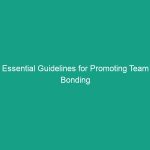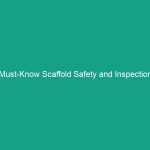Introduction
Good morning team! Today, we’re going to discuss a vital topic that impacts not only our workplace but also the public we serve: Essential Guidelines for Protecting the Public: Must-Know Safety Tips. It’s crucial that we understand our role in maintaining Safety Standards and protecting the community around us. By following these guidelines, we contribute to a safer Environment for everyone.
Understanding Essential Guidelines for Protecting the Public
The term Essential Guidelines for Protecting the Public refers to a set of safety protocols designed to minimize risks and Hazards in the workplace, ensuring that both employees and the public remain safe. These guidelines are not just bureaucratic red tape; they are essential practices that protect lives and enhance operational efficiency.
In our daily operations, adhering to these guidelines impacts our Procedures, decision-making, and overall safety culture. Many employees might think that Safety Guidelines are excessive or cumbersome. However, they are critical in preventing accidents and ensuring compliance with legal standards.
Key Hazards, Risks, and Safety Considerations
When we talk about protecting the public, we must recognize specific hazards and risks associated with our work. Here are some common risks:
- Environmental Hazards: Chemicals, pollutants, and waste can pose serious risks to public health.
- Physical Hazards: Equipment and machinery can lead to injuries if not used correctly.
- Human Factors: Negligence or lack of Training can result in accidents that endanger both employees and the public.
Ignoring these safety protocols can have real-world consequences, such as accidents, injuries, and legal consequences for the company. It’s essential to recognize that our actions directly influence Public Safety.
Best Practices, Procedures, & Actionable Advice
To effectively protect the public, here are some Best Practices you should follow:
- Regular Training: Participate in safety training sessions to stay updated on Best Practices and new Regulations.
- Risk Assessments: Conduct regular risk assessments to identify potential hazards in your work environment.
- Proper Use of Personal Protective Equipment (PPE): Always wear appropriate PPE when required, and ensure it is in good condition.
- Clear Communication: Maintain open lines of communication with your team about any safety concerns or incidents.
For instance, let’s consider a recent case where a company ignored safety protocols regarding chemical storage. As a result, a leak occurred, affecting nearby residents. This incident highlights the importance of following safety guidelines to protect both our employees and the public.
Regulations, Standards, and Compliance
Understanding the regulations that govern Workplace Safety is crucial. Compliance with standards set by organizations like OSHA (Occupational Safety and Health Administration) and ISO (International Organization for Standardization) not only keeps us safe but also protects our community. Here’s why compliance is critical:
- Legal Protection: Following safety guidelines shields the company from legal repercussions.
- Public Trust: Adhering to safety standards builds trust with the community we serve.
- Employee Well-being: A safe workplace fosters employee morale and productivity.
It’s imperative that we stay informed about these regulations and ensure our practices align with them. Regular audits and compliance checks can help maintain high safety standards.
Employee Engagement & Discussion
Now that we’ve covered the guidelines and procedures, let’s open the floor for discussion. I’d like to hear from you:
- What safety challenges have you encountered related to protecting the public?
- Can you share any experiences where safety protocols helped prevent an incident?
- How can we improve our current safety practices?
Your insights are valuable in shaping our safety culture and ensuring we are all on the same page when it comes to protecting the public.
Conclusion & Key Takeaways
In summary, the Essential Guidelines for Protecting the Public are not just suggestions; they are necessary practices that safeguard lives. By following the best practices, understanding the regulations, and engaging in open discussions, we can create a safer environment for everyone involved.
Let’s make a commitment to prioritize safety in our daily routines. Thank you all for your attention and dedication to maintaining a safe workplace. Together, we can ensure that we not only protect ourselves but also the public we serve.


